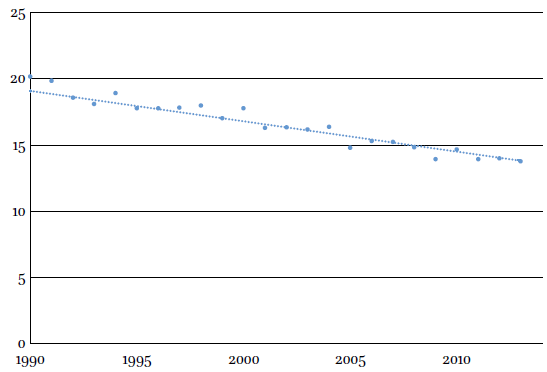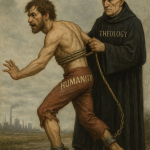 Smithsonian.com has an article on Gobekli Tepe, which is possibly the world’s oldest temple. Dated to 11,000 years ago, just as the last ice age was coming to an end, it’s one of a handful of sites in the region that seem to show the first evidence of organized religion. Question is, what sparked this thought revolution?
Smithsonian.com has an article on Gobekli Tepe, which is possibly the world’s oldest temple. Dated to 11,000 years ago, just as the last ice age was coming to an end, it’s one of a handful of sites in the region that seem to show the first evidence of organized religion. Question is, what sparked this thought revolution?
To Schmidt and others, these new findings suggest a novel theory of civilization. Scholars have long believed that only after people learned to farm and live in settled communities did they have the time, organization and resources to construct temples and support complicated social structures. But Schmidt argues it was the other way around: the extensive, coordinated effort to build the monoliths literally laid the groundwork for the development of complex societies.
The immensity of the undertaking at Gobekli Tepe reinforces that view. Schmidt says the monuments could not have been built by ragged bands of hunter-gatherers. To carve, erect and bury rings of seven-ton stone pillars would have required hundreds of workers, all needing to be fed and housed. Hence the eventual emergence of settled communities in the area around 10,000 years ago. “This shows sociocultural changes come first, agriculture comes later,” says Stanford University archaeologist Ian Hodder, who excavated Catalhoyuk, a prehistoric settlement 300 miles from Gobekli Tepe. “You can make a good case this area is the real origin of complex Neolithic societies.”
I guess that depends how you define ‘complex societies’. The remarkable site at Çatalhöyük, also in Turkey (although in central rather than south-eastern region), dates to a couple of thousand years after Gobekli Tepe. The earliest known town, this site is remarkable because there does not appear to be any social stratification – all the houses are a similar size, and there doesn’t appear to be any differentiation of the type you see in later towns.
The people of Çatalhöyük were remarkably egalitarian. Since stratification is a hallmark of complex societies, it seems that religion pre-dates them. Ian Hodder, the modern excavator of Çatalhöyük, makes this point:
“Everybody used to think only complex, hierarchical civilizations could build such monumental sites and that they only came about with the invention of agriculture,” said Ian Hodder, a Stanford University anthropology professor who has directed digs at Catalhoyuk, Turkey’s most-famous Neolithic site, since 1993.
“Gobekli changes everything. It’s elaborate, it’s complex, and it is pre-agricultural. That fact alone makes the site one of the most important archaeological finds in a very long time.”
So if it wasn’t complex societies, what was it the triggered the invention of religion? The Smithsonian article mentions the intriguing symbolism of the site, not seen in earlier art:
What was so important to these early people that they gathered to build (and bury) the stone rings? The gulf that separates us from Gobekli Tepe’s builders is almost unimaginable. Indeed, though I stood among the looming megaliths eager to take in their meaning, they didn’t speak to me. They were utterly foreign, placed there by people who saw the world in a way I will never comprehend. There are no sources to explain what the symbols might mean. Schmidt agrees. “We’re 6,000 years before the invention of writing here,” he says.
Trevor Watkins, a retired Profess of Archaeology at Edinburgh, reckons that it was the development of symbolic representations that was the final piece in the jigsaw allowing for organised religion to manifest. This is from a talk he gave back in 2001:
Throughout hominid evolution language had been evolving in ways that are little understood and certainly not agreed by linguists. In the paintings and modelled representations of the upper palaeolithic we can see, I would suggest, the first essays in another mode of symbolic representation – like a child’s first words. A few tens of thousands of years later, at the end of the epi-palaeolithic and the beginning of the neolithic periods in south-west Asia, we see much richer vocabularies of symbolic representation, and enough hints, I think, to indicate that these are material expressions within systems of symbolic representation.
As Steven Mithen (1998, 1999) has pointed out, it is no coincidence that the first uses to which this extension of symbolic representation were put included representations of beings that are half animal and half human, non-natural or super-natural beings. With the emergence of what Mithen calls ‘cognitive fluidity’, the human mind enjoyed the power for the first time to reflect on the nature of the world, to use its power to cross-reference across all the realms of experience and knowledge, to think analogically, to formulate vivid ideas in terms of metaphors.
In other words, it was not a material revolution – high population densities and agriculture – that gave rise to religion. And if it wasn’t that, then the spark may have been cognitive.














